Quick: name a national park in Utah. If your first thought was Zion or Arches, well, you’re not alone. Utah has five national parks, but three — Zion, Arches, and Bryce Canyon — see the lion’s share of annual visitors. In 2021, Zion had more than 5 million visitors, Arches had 1.8 million, Bryce Canyon had 2.1 million and, heck, even Capitol Reef had 1.4 million visits. But Canyonlands, despite being the largest national park in Utah, saw only about 900,000 visitors.
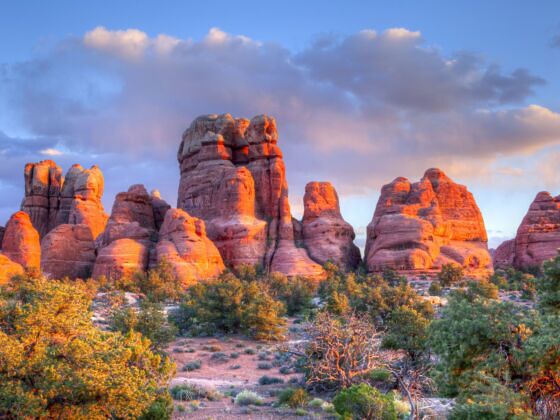
Your Guide to Visiting Canyonlands, Utah's Least-Busy National Park
But if you’re reading this and wondering “just where is Canyonlands National Park, anyway” know that that’s a good thing. The fact that people don’t know much about it keeps the crowds low. It’s never as busy as its other Utah neighbors, and even plenty of national park fans couldn’t point to it on a map. But that’s all the more reason to go — at least if you like being in red rock deserts, surrounded by natural beauty without another person in sight. And let’s be real: sometimes, getting away from other people can be really, really nice.
Here’s the scoop on Canyonlands National Park, Utah, to help jump-start your vacation planning.
-
- Where is Canyonlands National Park?
- The best time to visit Canyonlands
- Do you need a reservation for Canyonlands?
- The best hiking in Canyonlands National Park, Utah
- Other things to do in Canyonlands
- Can you drive through Canyonlands National Park?
- Are dogs allowed in the park?
- Where to stay near Canyonlands
Where is Canyonlands National Park?
Canyonlands National Park is in southeastern Utah. It’s close to Moab (a 30-minute drive) as well as the far more popular Arches National Park (about a 25-minute drive). The park covers 337,598 acres and is divided into three major districts: Island in the Sky, The Needles, and The Maze. The park is known for its stunning landscapes, including canyons, mesas, and buttes, as well as its diverse wildlife and recreational opportunities. Canyonlands, along with the other parks in the state, are collectively known as Utah’s Mighty Five and can be connected in one epic outdoorsy road trip.
When is the best time to go?
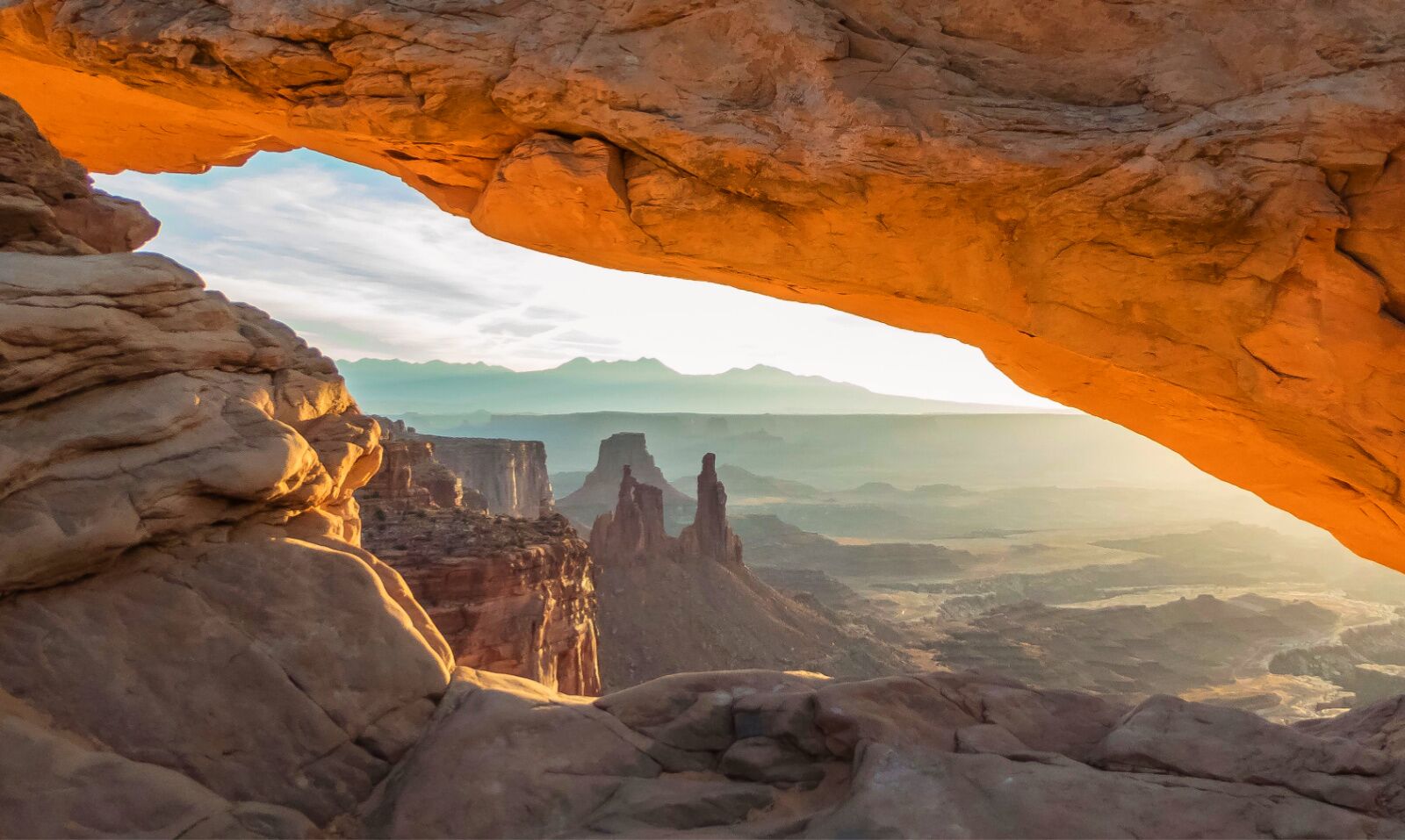
Photo: Jnjphotos/Shutterstock
Do you need a reservation for Canyonlands?
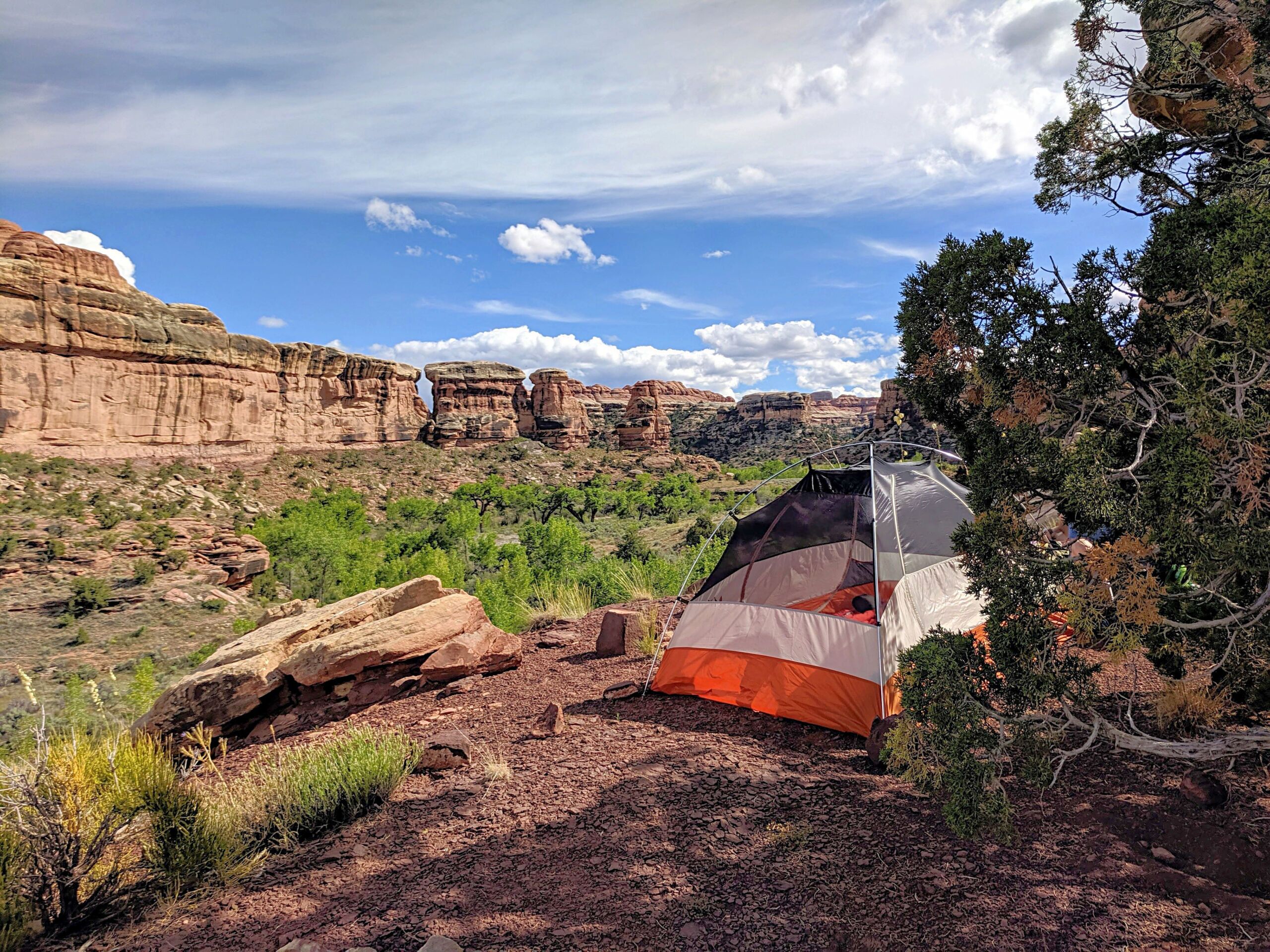
Photo: Mikev23/Shutterstock
Whether you need a reservation for Canyonlands National Park depends on what you want to do. Fortunately, you do not need a reservation just to enter the park.
Backcountry permits: If you want to do a backcountry trip (either an auto-tour with an overnight, a backpacking trip, or a bikepacking trip), you need a wilderness permit. They’re competitive and distributed in advance via Recreation.gov. Permits are available four months before the start of each season (here’s the exact schedule). You have to choose exactly where you want to stay each night, so do some planning in advance before you apply for the permit. Fortunately, the park has a super-helpful step-by-step guide to how to plan your permit application.
You can also get a walk-up permit the day before you want to start your trip from a park visitors center if any are still available. Make sure you know the detailed backcountry rules before starting your trip.
Day use permits: You need a day-use permit to bike or drive certain roads in the park. They’re available only one day in advance, starting at 8 AM mountain time. So if you want to start your trip Tuesday morning, be ready to apply for your permit by 7:59 AM on Monday. About 25 permits for White Rim Road day use are distributed at the permit office and visitors centers the day of and are given on a first-come, first-served basis.
River rafting: You’ll need a permit if you’re hoping to do a rafting trip on any of the park’s rivers. Distribution is online and begins four months ahead of time. Summer permits open mid-December, and winter permits open mid-June.
Front-country camping: Most of the park’s front-country sites are first-come, first-served, and it’s usually not too hard to find one. However, most of the sites in The Needles campground can be reserved in advance up to six months in advance during the peak season (March-May and Sept-Nov).
Hiking in Canyonlands National Park

Photo: Margaret.Wiktor/Shutterstock
Hiking in Canyonlands National Park is a great way to experience desert scenery and truly see the park’s gorgeous rock patterns and details up close. Remember that there is very little shade, almost no water, and extreme heat in the park, even in winter. Make sure you know the basics of desert hiking before beginning a trip.
Most hikers start in Island in the Sky, where you’ll find some of the park’s most popular hiking trails. The easy trails in Island in the Sky stay on top of the mesa with very little elevation gain and range from the .6-mile Mesa Arch Trail to the 3.4-mile Murphy Point Overlook; none have more than 150 feet of elevation gain. Other good hiking options include Aztec Butte (which goes past protected Indigenous sites) and the 11.2-mile Alcove Trail, which goes past the park’s famous Zeus and Moses towers.
The Needles is the other area of the park known for hiking. It’s where you’ll find popular trails like Druid Arch (10.8 miles), which offers great views of the park and a few steep ladder climbs through red-rock canyons and washes. Most hikes in this area are long and in the 10-mile-plus range, though the Chesler Park Viewpoint trail is only 5.8 miles long. However, if you don’t want to descend into the canyon, you can instead stick to the paved road and stop at the four easy trails in the Needles. They total a distance of roughly 5 miles and have interpretive signage along the routes.
The topography of The Maze makes it very difficult to navigate, especially because many of the “trails” are unmaintained and unmarked. Nearly all trails there are recommended for backpacking only, but don’t attempt them unless you’re skilled in routefinding and backcountry navigation. The exception to this is the 10.6-mile Great Gallery hike in Horseshoe Canyon, which you can do in a day.
What to do in Canyonlands besides hiking
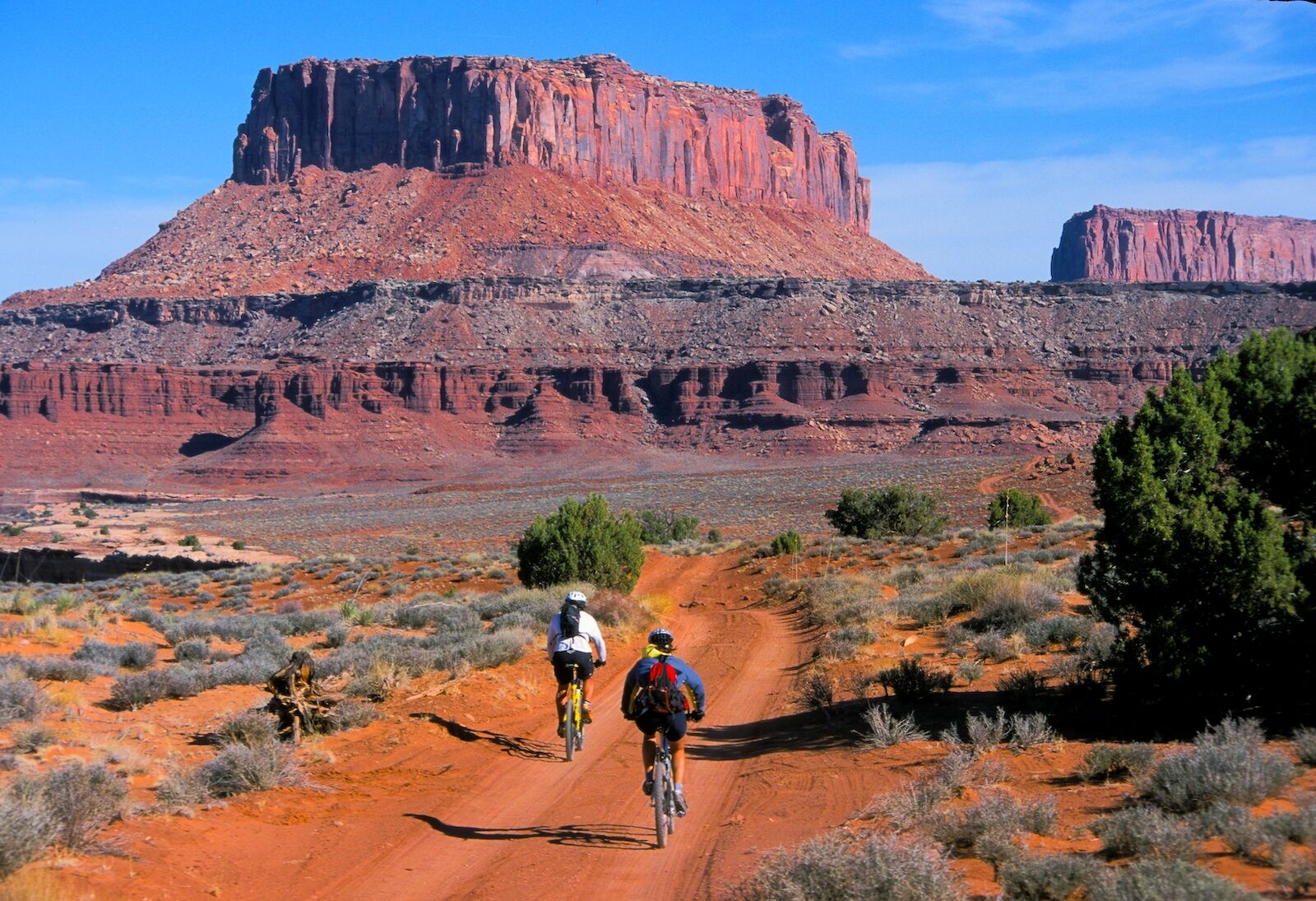
Photo: NPS/Neal Herbert
One of the main reasons an area may get a national park designation is because it offers excellent recreation opportunities, and Canyonlands is no exception. Things to do in Canyonlands range from biking to hiking to wildlife watching.
- Guided programs: Ranger programs in the park are free and start at both The Needles visitor center and the Island in the Sky visitors center. Activities range from geology talks and guided tours to birdwatching walks and evening stargazing sessions.
- Rock climbing: Most of the rock in Canyonlands isn’t well-suited to climbing, but the exception are the sandstone towers in Island in the Sky. It should go without saying, but you can’t install any new routes or leave ropes mounted overnight. Use of white chalk is also prohibited, so buy colored chalk before heading out (or go without).
- Rafting: There’s more water in the park than you’d think. Paddlers can enjoy flatwater conditions on the park’s Green or Colorado rivers (permits required for overnight trips), and whitewater fans probably already know about Cataract Canyon on the Colorado River. It’s usually experienced as part of a longer rafting trip that starts and ends outside the park. River permits are required, and trips can range from 2-9 days, depending on your starting and ending points.
- Stargazing: Stargazing is extremely popular and requires no training, though you may want some equipment like a telescope or stargazing app to help you identify the constellations and planets. It may not be one of the western US’s official Dark Sky Parks, but it’s still home to some of the darkest skies you’ll ever see. (By the way: your eyes usually need about 15-20 minutes to fully adjust to darkness).
- Cycling: Mountain biking is allowed in Canyonlands (details below) and most bikers stick to Island in the Sky. You’ll need to cache supplies along the route (or carry quite a lot with you).
Can you drive through Canyonlands National Park?

Photo: NPS/Chris Wonderly
You can absolutely drive through Canyonlands National Park. Unlike nearby Zion, which requires guests to take a shuttle in the park’s most popular areas, there are lots of roads through the park and they’re open to private vehicles. There are several routes that allow you to stop fairly close to some of the park’s best sights and lookouts. However, the three sections of the park are not connected by roads, so you’ll need to enter each separately.
You can drive to sights like Mesa Dome, Upheaval Dome, and the White Rim Overlook starting from the Island in the Sky Visitor Center. In The Needles, the paved road leads to Pothole Point, Elephant Hill, and the Big Spring Canyon Overlook. Tiny Horseshoe Canyon, in the park’s northwestern corner, is only reachable via dirt roads. All the roads in The Maze are unpaved and require high clearance, making them available only for what the park calls “auto touring.”
Auto touring is backcountry driving along the park’s many dirt, unpaved roads. You will need high clearance and a 4WD vehicle, and be sure to check on road conditions and concerns like mud, snow, or wash-outs before you start your trip. The most popular routes include:
- White Rim Road: The 100-mile routes is in Island in the Sky and takes two or three days to drive if you do the whole thing. You’ll need a permit to drive it, whether you’re doing a day trip or planning to camp. This route is also popular with mountain bikers on bikepacking trips and is one of only a few multi-day national park trails open to full-suspension mountain bikers.
- Elephant Hill and Lavender Canyon: There are about 50 miles of unpaved roads in The Needles area of the park. The roads are steeper, rougher, rockier, and more pitted than White Rim Road, so it’s not a great choice if you’ve never done any off-road driving before. Permits are required for all vehicles.
- Any road in The Maze: The Maze is the most hard-to-navigate section of the park on foot, and also the hardest to drive. The park website puts it best: “Four-wheel-drive roads in The Maze are extremely remote, very difficult, present considerable risk of vehicle damage, and should not be attempted by inexperienced drivers.” Permits are required for overnight trips.
Are dogs allowed in Canyonlands National Park?

Even the friendliest dogs can spook wildlife and introduce foreign scents in the park. Photo: Spaliuke/Shutterstock
Yes, dogs are allowed in Canyonlands National Park — but not in very many places. Part of the point of a national park is to protect wildlife, and having dogs in natural areas can scare wild animals, introduce new smells to their habitats, and change their behavior patterns. Those are all, of course, undesirable, which is why only a few areas in Canyonlands National Park allow dogs. They’re allowed only in front-country roads and parkings lots, in non-backcountry camp areas, and in front-country picnic areas. They must be on leashes and can’t ever be unattended. And you must clean up after your dog everywhere in the park. Dogs are not allowed on any trails anywhere in the park.
If you’re thinking of leaving your dog in the car while you hike, do not do it. Canyonlands gets extremely hot, and it’s not safe to leave dogs in your car, even for a short amount of time. The park’s pet information page has a list of alternative area parks where dogs are welcome. There are dog boarding facilities in nearby Moab.
Where to stay near Canyonlands National Park
When visiting Canyonlands, most people stay in Moab, unless they’re camping in the park. Moab has lots of cool Airbnbs, from traditional homes to unique adobe huts. And staying in Moab also puts you close to Arches National Park. Since Arches gets more crowded, consider visiting Arches midweek and heading to Canyonlands on the busier weekends.
We hope you love the spaces and stays we recommend! Just so you know, Matador may collect a small commission from the links on this page if you decide to book a stay. Listed prices are accurate as of the time of publication.
Radcliff Moab
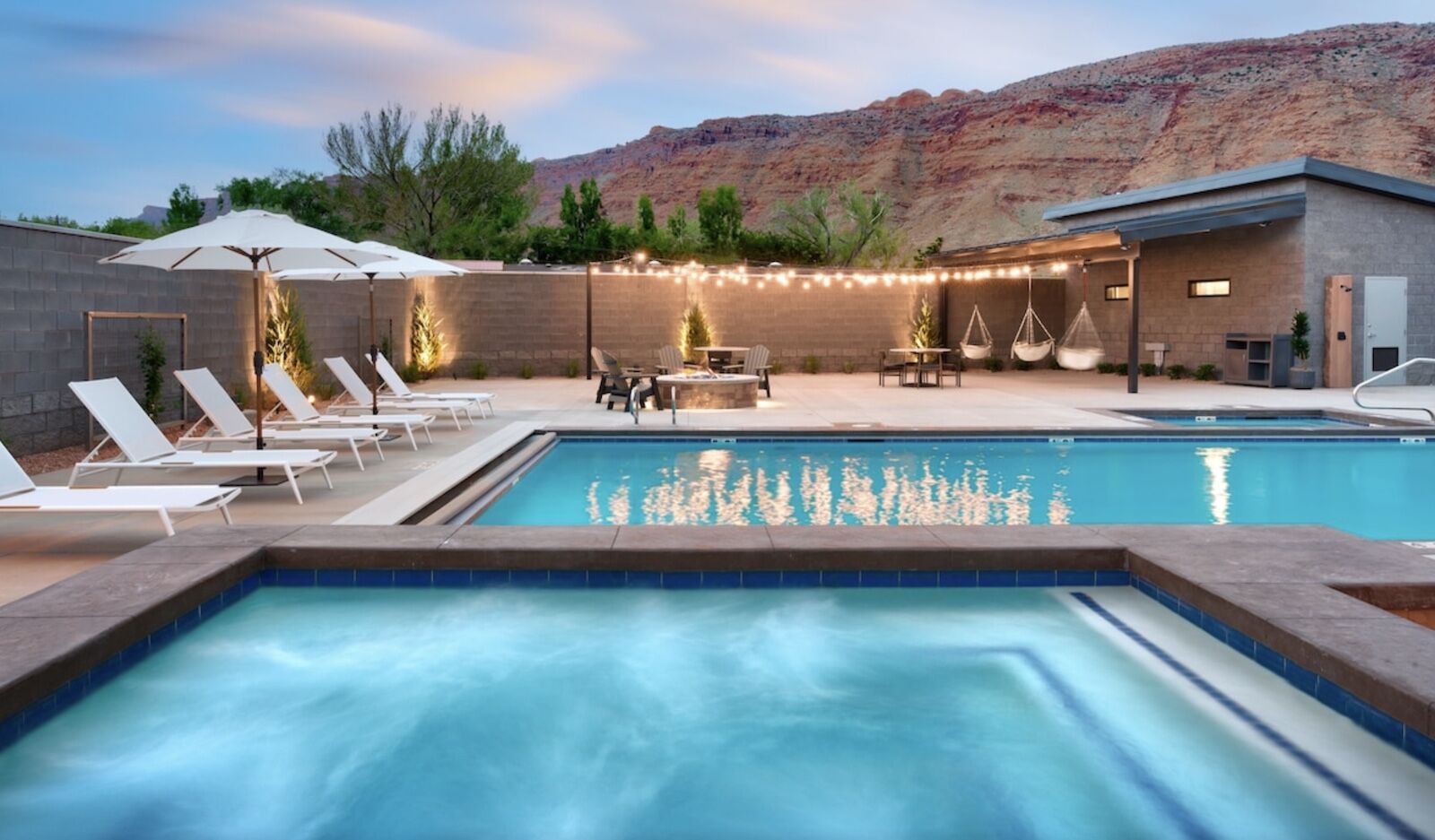
Photo: Expedia
Radcliff Moab is a boutique hotel with just 38 rooms. It’s hip and modern, with a gear storage rooms for bikes, a big outdoor swimming pool and hot tub with great views, and useful add-ons like pre-packed picnic lunches and staff who can assist and advise with activity bookings. Rates start around $119 a night but can go into the high $300s in May and October.
Field Station Moab
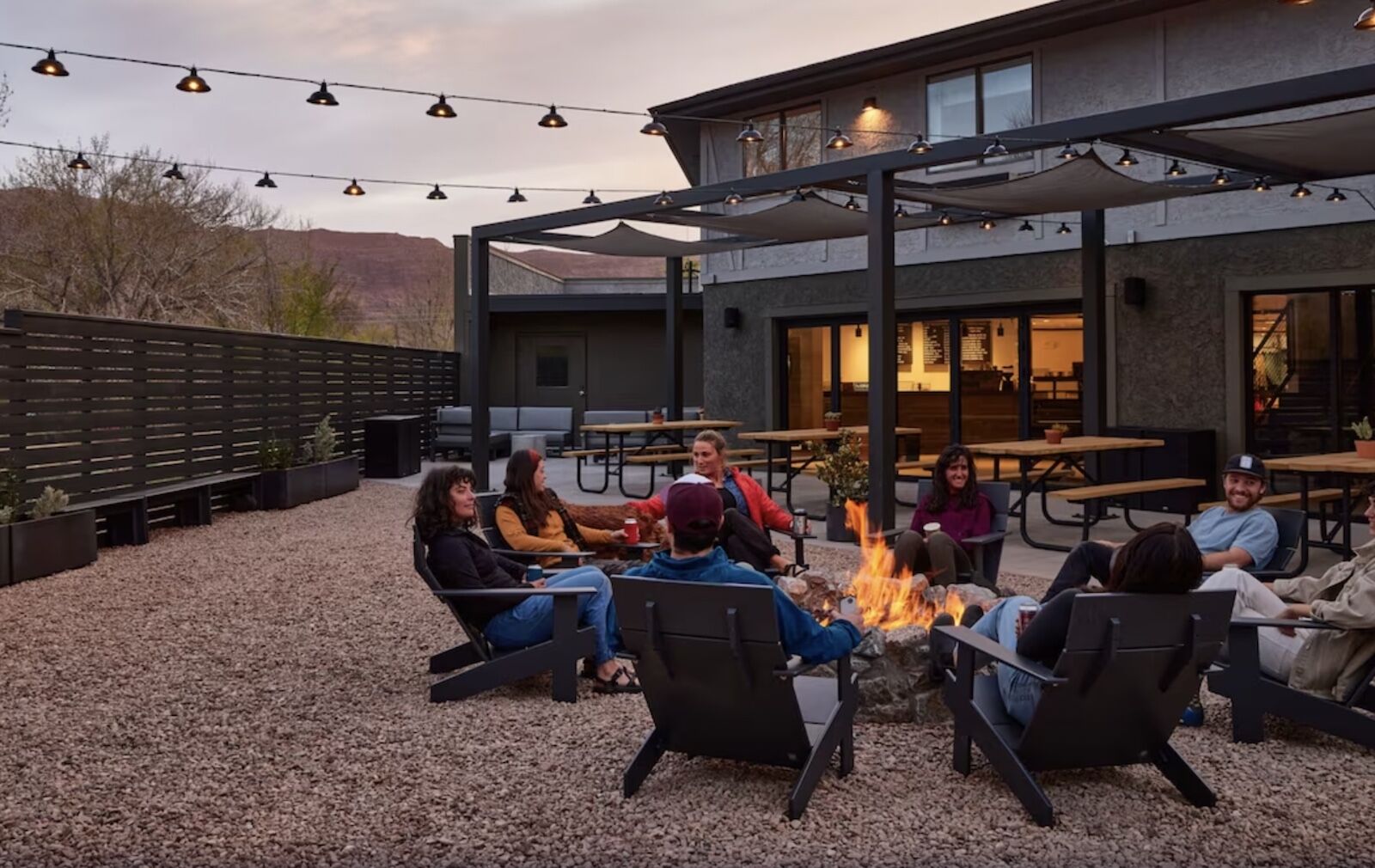
Photo: Expedia
Field Station is a new, small hotel chain focused on meeting other adventure travelers. You can book a standard hotel room, or book a bunk room to sleep up to 8 people. It’s a great place to stay if you’re solo since the hotel runs outdoor programs on an ongoing basis, including climbing clinics, mountain bike tours, canyoneering, and more. It also regularly hosts live music on the large outdoor patio. Room rates start at $159/night.